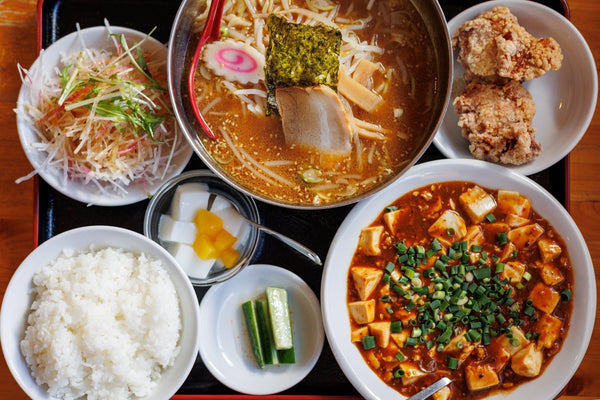
Jump to:
Chinese food, you say? In Japan?!
You're not in the wrong place. This is the Japanese Taste food blog. but today we're not exactly talking about Japanese food… not Japanese per se, anyway. Let's instead explore the world of Chinese food in Japan.
Readers of this Japanese food blog will remember that we've talked about a number of different international foods that have made their way to Japan and have, in fact, become a part of the food culture fabric in this island nation. From Italian and French influences, to Japanese takes on American food and much more, Japan has taken many different Cuisines of the world and managed to make something new (and usually brilliant) out of each one.
It should come as no surprise, then, that one of the biggest International cuisines in Japan is Chinese food, also called “Chuka Ryori.”
Chuka Ryori in Japan means many things to many different people, and takes on all sorts of forms – from street food to neighborhood restaurants to high-end dining and most everything in between. It appears in today's food landscape in Japan in the form of ramen, gyoza, fried rice, mapo tofu, and countless other Chinese-Japanese dishes that have in fact become a mainstay in the everyday diet of the Japanese people.
In this edition of the Japanese Taste food blog, we will dive into the world of Chuka Ryori, discovering its roots, evolution, execution and widespread appreciation in Japan.
History And Definition Of Chuka Ryori In Japan

So, what exactly is Chuka Ryori? Chinese food in Japan encompasses a vast array of dishes, from the familiar ramen and gyoza, to street favorites like nikuman and shu mai, to more intricate concoctions like mapo tofu and ebi chili sauce.
Most of these dishes could be familiar on some level to people from China / Greater China, or to those who are fans of Chinese food in their own country/
Before we start slurping noodles and savoring dumplings, let's rewind the culinary clock and dig into the roots of Chuka Ryori in Japan..
Defining Chuka Ryori: How Chinese Food Became a Part of Japan’s Culinary Lineup
The journey of Chuka Ryori began as a bridge (the metaphorical kind, one that involved boats and international trade) connecting China to the shores of Japan.
The historical footprints of Chuka Ryori are imprinted in the bustling streets of Yokohama's Chinatown, one of the oldest and largest Chinatowns in the world. This vibrant neighborhood became a living testament to the cultural exchange between China and Japan. Imagine the din of woks, the sizzle of street-side stalls and the clinking of chopsticks – that's where Chuka Ryori found its initial heartbeat in Japan.
Back in the day, Chinese immigrants and traders brought not just wares but also the aromatic treasures of their kitchens. They settled in Japanese cities such as Yokohama, Nagasaki, Kobe and elsewhere.
Of course, like immigrants to many societies around the world, Chinese immigrants to Japan needed to adapt to the local culture; and this naturally included food. So rather than keeping Chinese cuisine “pure” in Japan, the Chinese-Japanese community had to use local ingredients and adapt to local flavor profiles. This was especially evident in restaurants, where patrons who were not familiar with traditional Chinese cooking were more likely to enjoy their meals, make return visits and spread the good word if the flavors were more familiar to the Japanese palate.
And thus the birth of Chuka Ryori – Chinese food in Japan. To this day, Chuka remains a unique food group as a subset of Japanese cuisine. It is not only different from food in China, it is markedly different from Chinese food in other countries and regions of the world.
Chinese Food In Japan: From Ramen & Gyoza To Mabo & More
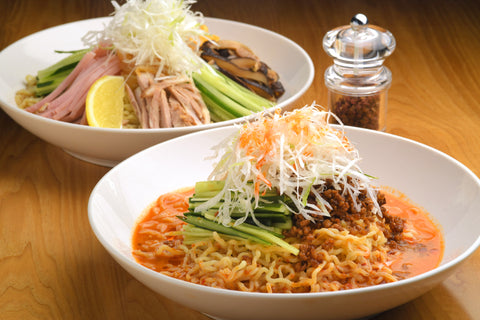
Depending on where you come from, be it the US, Canada, Europe, Australia, or elsewhere, your definition and expectation of “Chinese food“ may vary significantly. Even within the US, for example, what people are accustomed to as Chinese food can differ from one city to the next. That's largely because of immigration patterns and where people came from in China, for example, but also due to the regional differences and what the local market expects from flavor profiles in general.
The visitor to Japan, therefore, will certainly find differences in what Chinese food is here compared to what Chinese food is considered as back home.
in Japan, the most popular Chuka Ryori dishes include:
- Ramen
- Gyoza (fried dumplings)
- Chahan (fried rice)
- Mabo tofu
- Harumaki (spring rolls)
- Nikuman (steamed buns)
Of course there are many other popular Chuka Ryori dishes in Japan, and here too it can vary from region to region. Chinese food in Japan has also evolved over time, and certain items are more popular among different age groups.
One thing that would be clear to visitors both from Western countries and from China, however, is that Chinese food in Japan is most definitely unique to Japan. A person from Shanghai, for example, might not necessarily recognize the steamed soup dumplings that are most commonly served in Japan, as both the ingredients and process are different from the original. That also goes for gyoza, fried noodle dishes (such as chuka yakisoba or champon), sweet and sour pork (subuta), “Chinese” style fried chicken (chuka karaage), and many others.
Ramen: Is It Japanese or Chinese?

For years now, a debate has been brewing with regards to the ever-popular dish known as Ramen in Japan and around the world. The question is: "Is ramen Japanese or Chinese?" Well, the long answer is far more complicated, of course, but the short answer is: “Yes."
If you haven't seen it already, we've written an article about Ramen which includes its origins, evolution, adaptation, legends and much more.
Ramen is, indeed, rooted in Chinese food culture. It was adapted in Japan to fit both Japanese tastes and available local ingredients. A Chinese person would not necessarily recognize ramen in Japan as being Chinese; and a Japanese person trying the original form of this soup in China might not recognize it as ramen. And visitors to Japan looking for ramen most likely see it as a Japanese food, rather than a Chinese food.
Yet we can be quite certain that a strong link exists between the two food cultures – China and Japan – in terms of ramen’s origins, evolution, adaptation and indeed its global success story.
Japanese Gyoza vs. Fried Dumplings in China (or Chinese Restaurants Worldwide)

Another popular food in Japan that has Chinese roots is gyoza. Known as fried dumplings or potstickers in Chinese restaurants around the world, Japanese gyoza are significantly different from their Chinese counterparts.
Gyoza tends to be larger than Chinese fried dumplings. The gyoza wrapper is also generally thinner than the potsticker wrapper. Gyoza in Japan is typically fried, although sometimes it can be steamed; Chinese dumplings, meanwhile, are made with a variety of cooking methods including pan frying, steaming, boiling, etc.
The filling in gyoza also tends to be a bit lighter in flavor profile compared to Chinese dumplings. This reflects the overall Japanese preference for food that is more delicate. Still, gyoza in Japan varies from restaurant to restaurant and household to household. Ask any Japanese person about gyoza, and you'll get different answers as to their preferences for filling, especially in terms of the amount of garlic or ginger. Many Japanese traditionally have not been fans of garlic, for example, although this flavor profile is changing over time in Japan.
Similar to its Chinese counterparts, gyoza is usually served with a sauce that is a mix of vinegar, soy sauce and or chili oil.
Mabo Tofu In Japan Compared To China & Elsewhere
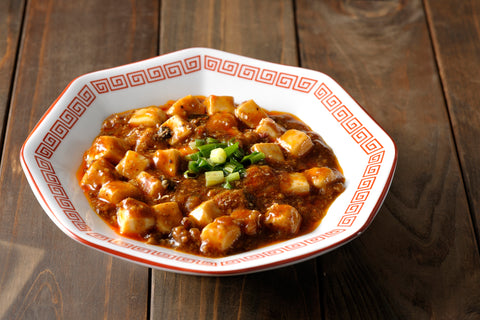
Mabo tofu (ma po tofu) Is another dish that has evolved and adapted to local Japanese flavor profiles. Eating mabo tofu today in Japan is not only different from eating its Chinese counterpart, it can vary from region to region and again by personal preference.
Japanese mabo tofu, for example, uses a traditional combination of sauces in the Japanese flavor profile, most notably miso, mirin, sesame oil and sometimes sake. It tends to be much less spicy than mabo tofu in China or in Chinese restaurants around the world, so much so at times to the point where a Chinese person might claim the Japanese version to be “bland." That's because the standard Japanese preparation does not include chili peppers or Sichuan peppers. It is, however, often made with doubanjiang, the flavorful bean paste that's quite common in Chuka Ryori.
Venture into a restaurant in China or a Chinese restaurant in North America, and you're likely to get a version of mabo tofu that is spicy and much redder in appearance. Much like the garlic factor in the gyoza debate, the spiciness in Japanese mapo tofu is something that's widely discussed, and more and more people are enjoying spicy food these days in Japan.
Dim Sum in Japan: How It Differs from Hong Kong & Greater China
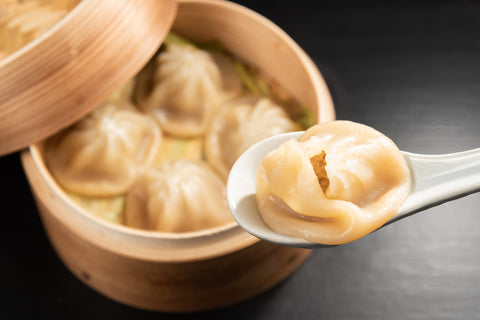
If you live in a large US city or have traveled to places such as Hong Kong or even London or Sydney, you are quite likely familiar with dim sum as a food group within Chinese cuisine.
So if you're visiting Japan and looking at Chinese food in Japan, is dim sum something that you'd like to try, and would you recognize it as being similar?
For the most part, it turns out, both visitors to Japan and resident expats in Japan are often surprised at the differences between dim sum items in Japan versus what they had previously enjoyed in cities such as Hong Kong, San Francisco, Vancouver and elsewhere. Some have even gone so far as to say that they are “disappointed” in Japanese dim sum.
In fairness, dim sum is not a very big thing in Japan, but there are certain elements of dim sum that are seen in wider proportions among Chinese food in Japan, most notably shumai and nikuman, as well as dim sum favorites such as fried dumplings, steamed soup dumplings (xiaolongbao or shoronpo), and a few others. Rather than a sit-down meal in a restaurant where carts are coming by, these dim sum items in Japan tend to be found in either take out shops (being the most popular and common iteration) or some Chinese restaurants in bigger cities such as Yokohama, Tokyo, or Kobe, which have dim sum available to be ordered off a menu.
Perhaps it's better to look at this from the standpoint of Japanese flavor profile adaptation. Rather than comparing it to “pure” dim sum from Hong Kong or elsewhere in the greater Chinese diaspora, let's take these food items in Japan and see them in their own light, and enjoy the offerings which themselves can be quite delicious.
Chinese Restaurants In Japan: Our Chuka Ryori Recommendations
With all this said, if you're heading to Japan for a visit and want to try some of the Chinese food that we've talked about here, you may be wondering if we have some recommendations for you. Indeed we do!
Nationwide Chinese Restaurant Chains in Japan
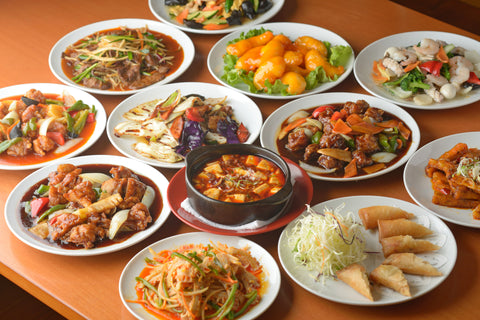
The two biggest chains across Japan these days, when it comes to Chuka Ryori, are “Gyoza no Ohsho” as well as “Tenkaippin.”
With something like 750 locations in Japan nowadays, Gyoza no Ohsho Does a pretty good job of living up to its name, literally translated into English as the “king of gyoza.” They’ve got the formula down well, having been slinging gyoza and other Chinese-Japanese favorites for a half century.
Whether you're in Tokyo, Kyoto, Osaka or elsewhere in Japan and you're looking for gyoza, it's a pretty good bet that the King has a location near you. That's not to say it's the absolute best gyoza that you'll ever have. That would likely come in the form of the homemade version, but then again that's pretty tough to get as a visitor, so if you got a hankering, you can't go wrong with the Gyoza no Ohsho. They also serve Chinese favorites such as fried rice, hot and sour soup, a Japanese version of egg foo young, and many other tasty dishes.
Tenkaippin, meanwhile, has about 1/3 the number of locations compared to Ohsho, but is no less a heavy hitter when it comes to Chuka Ryori.
The specialty of the house at Tenkaippin is white ramen, mainly a chicken base. It’s considered “kotteri” ramen, meaning “rich” or “heavy.” Despite this, we of course recommend an order of gyoza to go along with your ramen, whether you go with the white ramen or one of their other many ramen options on the extensive menu.
Ramen Chains & Local Restaurants in Japan
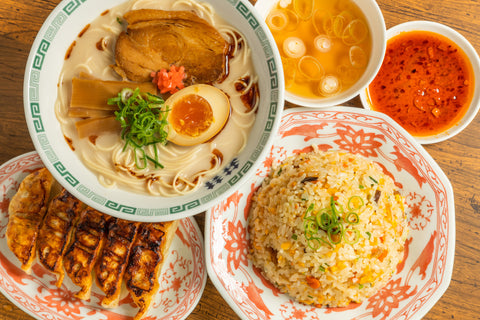
We've discussed this in our series of articles about ramen, but when it comes to eating this Chinese / Japanese favorite in Japan, you've got choices that include local ramen shops as well as national chains.
The most famous in the ramen chain category include Ichiran and Ippudo, which not only have locations across Japan but have expanded to worldwide operations. The product, service and ambience from one location to the next are rather consistent, and thus visitors to Japan are getting a known quantity when opting for one of these two popular ramen chains – that goes whether you're in Tokyo, Kyoto, Osaka, Fukuoka (the home of tonkotsu ramen!) or elsewhere in Japan.
On the flip side, nearly every region and major city in Japan boasts its own version of ramen, and a quick search on Google Maps will show the nearest local ramen shop that gets good reviews. A visit to virtually any of these means you can't go wrong, you're trying something local and getting a new experience out of it, and are very likely to have a memorable ramen meal.
This local search approach holds well not only for holds true not only for ramen shops but all kinds of Chinese food in Japan. We recommend that you search for the term “中華料理“ (Chuka Ryori) to find restaurants either near your hotel/accommodation or in the area you plan on being for lunch or dinner.
Like other restaurants in Japan, many Chinese restaurants will have photos of the food, and some in the bigger cities and tourist areas will even have English or romanized translations of the food names. At the very least, you can always point to a photo or point to what somebody else is eating. Favorites and reliable stalwarts in the Chuka category include gyoza, chahan (fried rice), mabo tofu, among many others – Simply asking for these dishes will most likely get you a knot of the head and your meal served quickly before your eyes.
Chinatowns In Japan: Yokohama, Kobe, Nagasaki & More
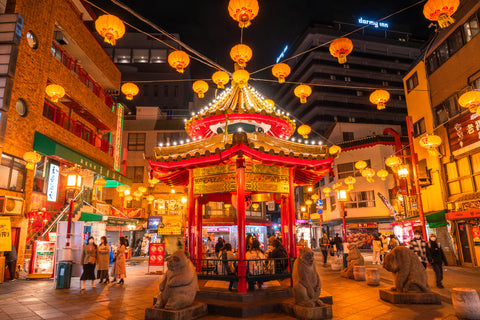
To explore the Journey of Chinese food in Japan further, why not visit one of the many Chinatowns in Japan?
If you're in Tokyo, the closest Chinatown is also the largest one in Japan: nearby Yokohama. Here you'll find all kinds of Chinese restaurants as well as shops that reflect the history of Chinese people in Japan as well as the current culture and community. Popular restaurants in Yokohama Chinatown include Manchinro, Shatenki, Suiho Honten, Jukeihanten Shinkan, among many fine options.
Further afield, the Chinatowns of Kobe and Nagasaki reflect the history of the Chinese immigrant Community as well as the Chinese / Japanese food culture here. a walk through one of these Chinatowns will be a sensory experience, both visually and olfactory. It is quite common to see street food in the area, especially things on sticks as well as shumai, soup dumplings and many other items. Don't hesitate to follow your nose and/or follow the queues.
Making Chuka Ryori At Home
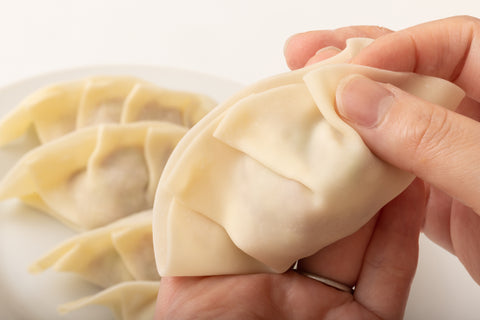
Want to try your hand at cooking Chinese-Japanese food at home?
The options and permutations are practically endless. From gyoza and fried rice to mabo tofu, harumaki spring rolls and much more, you can expand your Japanese culinary repertoire by adding Chuka Ryori into the mix.
Here are some of our articles that will help get you cooking with handy recipes:
Of course, we offer many ingredients on Japanesetaste.com that will complete your kitchen lineup when it comes to making Chuka Ryori:
- Somi Shantan Deluxe All-Purpose Chinese Seasoning 500g
- S&B Rayu Japanese Chili Oil 31g
- Youki Tenmenjan Sweet Soybean Paste Seasoning 220g
- Youki Sichuan Doubanjiang Hot Chili Bean Sauce 130g
- Nakamuraya Sichuan Mapo Tofu Sauce Spicy 155g (available in two levels of spice)
- Nisshin Annin Tofu Almond Jelly Instant Mix 60g
- Glico Donburi Tei Chukadon Chinese Style Vegetables Bowl 210g
And here are a handful of kitchen utensils, tools and accessories in the same vein:
- Japanese Stainless Steel Wok Ladle (160ml Capacity) ⌀110mm (available in various sizes)
- Japanese wok
- Tojiro DP Cobalt Chinese Cleaver Knife 225mm F-922
Whether you’re cooking Chuka Ryori at home or enjoying a feast at a Chinese restaurant in Japan, remember, it’s all about the fun in the food evolution that is Chinese-Japanese cuisine.
Chuka Ryori: Embracing Chinese Food In Japan
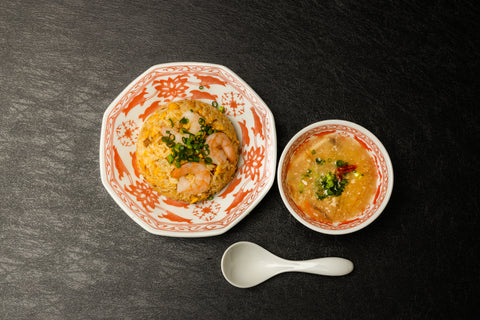
The journey and evolution of Chinese food in Japan continues.
Today's younger generations in Japan, for example, love garlicky gyoza and spicy mabo tofu, among other traditional Chinese foods. Indeed, Japan’s culinary culture has embraced foods like gyoza, Ramen and fried rice nearly as its own. The Chinese roots are still recognized, of course, but the adaptation and evolution are very much a Japanese phenomenon as well.
If you're visiting Japan in the near future, why not stop into a Chinese restaurant and find out for yourself?
Have you had Japan's version of Chinese food? What were your impressions? Let us know in the comments below… and happy food journeys!


0 comments